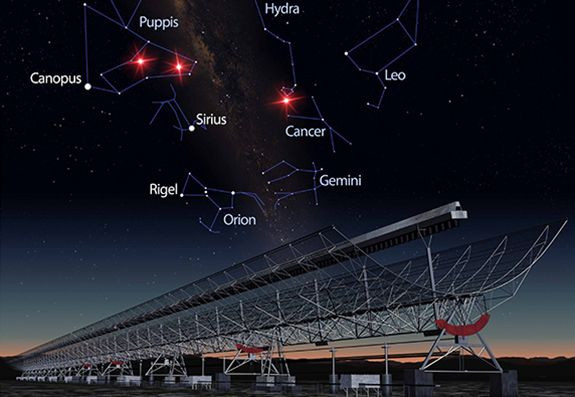Astronomers Discover Three New Fast Radio Bursts; Observations Suggest Extragalactic Point Of Origin

A team of astronomers associated with Australia’s Molonglo Observatory Synthesis Telescope announced Monday the discovery of three new Fast Radio Bursts (FRBs) — intense bursts of radio emission lasting mere milliseconds. In addition to adding to the extremely short list of such events detected so far and providing the first interferometric observations of FRBs, the discovery lends further support to the theory that these mysterious flashes originate in outer space.
The observations of the three FRBs (FRB 160317, 160410 and 160608), made during a 180-day period, have been described in a paper accepted for publication in the Monthly Notices of the Royal Astronomical Society.
Read: Fast Radio Burst Helps Map The Cosmic Web
Although two of the three newly discovered FRBs were discovered relatively close to the galactic plane, their dispersion measures and redshifts suggests an extragalactic origin. However, the exact point of origin of these events is yet to be ascertained.
“We spent 105 hours following FRB 160317, 43 hours on FRB 160410 and 35 hours on FRB 160608,” the researchers wrote in the paper. “No repeat pulses were found from any of the FRB positions.”
FRBs have baffled scientists ever since the first one was discovered in archived data in 2007. The longstanding mystery of their origin, which is further compounded by the fact that only about two dozen such events have ever been detected, has spawned a plethora of scientific (and some that sound not so scientific) theories, including the occasional speculation that aliens are responsible for them.
For some reason, FRBs never seem to repeat, and, as a result, most theories about the origin of these mysterious pulses involve invoking cataclysmic incidents that destroy their source, for instance, a star exploding in a supernova, or a neutron star collapsing into a black hole.
This changed in 2012 when the first and only known repeating burst, named FRB 121102, was discovered by scientists at the Arecibo Observatory in Puerto Rico. And, in January, over four years and several recurring bursts of this FRB later, astronomers were able to directly trace the mysterious burst to its point of origin, a dwarf galaxy 3 billion light-years from Earth.
So far, this is the only FRB whose source has been pinpointed — although even that hasn’t brought scientists any closer to understanding what birthed it.
“Perhaps the most bizarre explanation for the FRBs is that they were alien transmissions. Figuring out where the bursts come from is the key to understanding what makes them. Only one burst has been linked to a specific galaxy,” Manisha Caleb, a PhD candidate at Australian National University, Melbourne’s Swinburne University of Technology and the ARC Centre of Excellence for All-sky Astrophysics, and lead author of the latest study, said in a statement released Monday. “We expect Molonglo will do this for many more bursts.”
© Copyright IBTimes 2024. All rights reserved.






















